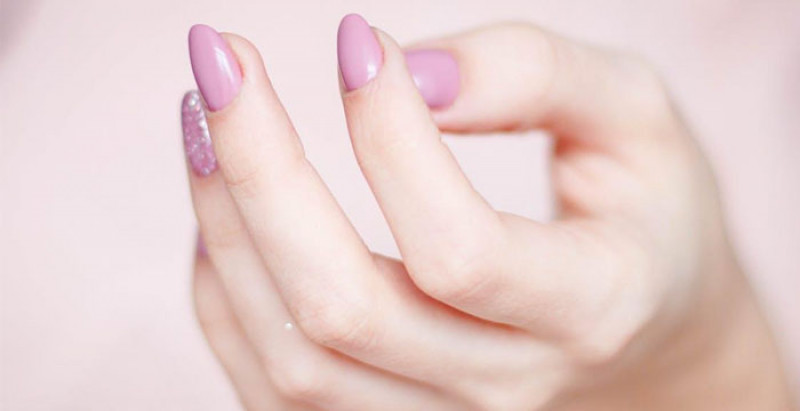
Healthy nails go far beyond polished tips and artistic flair. Behind every great manicure lies a strong foundation of knowledge—especially when it comes to nail health and safety. Whether someone wants to become a nail technician or simply take better care of their nails, understanding the science behind proper nail care is essential. Nail training provides a deep dive into not just how to create stunning designs, but also how to do it safely. With a growing awareness of hygiene, client safety, and long-term nail health, professional training makes all the difference in the world of nail care.
1. Understanding Nail Anatomy Builds a Strong Foundation
The first step in nail training focuses on understanding the structure and function of nails. The nail plate, matrix, cuticle, and surrounding skin all play important roles in nail growth and overall health. By learning the anatomy, students grasp why certain treatments or tools must be used carefully. For example, using an abrasive file near the matrix can lead to permanent damage. Nail training courses emphasize these details, so professionals work with precision. When nail technicians know what lies beneath the surface, they apply products and tools more responsibly, avoiding unintentional harm and supporting long-term nail health.
2. Hygiene Protocols Keep Clients Safe
Cleanliness in nail care isn’t optional—it’s essential. Nail training programs teach strict hygiene protocols to prevent infections and cross-contamination. From disinfecting tools to properly washing hands between clients, every step matters. Proper sanitation reduces the risk of transmitting bacteria, fungi, and viruses. This focus on hygiene protects not only the client but also the technician. The rise of online nail training has made it easier than ever for students to access detailed sanitation modules from the comfort of their homes. These digital courses provide up-to-date guidelines that match current industry standards, making quality education both accessible and comprehensive.
3. Product Knowledge Enhances Nail Health

A critical part of nail training involves understanding the products used daily in salons. Acrylics, gels, polishes, removers, and bonding agents all contain chemical compounds that can affect nail health. Students learn to read labels, understand ingredients, and choose products that are safer for repeated use. This knowledge helps avoid common problems like thinning nails, allergic reactions, or long-term damage from harsh chemicals. By mastering how to select and apply the right products, technicians can offer healthier options for their clients. It also allows them to educate clients on aftercare, contributing to better results and long-lasting nail integrity.
4. Nail Disorders and How to Spot Them
Nail technicians often serve as the first line of defense when a client develops a nail issue. Nail training includes modules on identifying common disorders such as fungal infections, psoriasis-related changes, and nail plate trauma. Recognizing these issues early allows the technician to refer the client to a healthcare provider when necessary. It also prevents treatment that could worsen the condition. A trained eye can distinguish between cosmetic concerns and medical issues. By understanding what lies outside the realm of cosmetic care, technicians ensure their clients receive proper attention while maintaining their own professional boundaries and responsibilities.
5. Ergonomics and Technician Health
Nail health isn’t only about the client—technicians need protection too. Nail training covers ergonomic techniques to help professionals avoid strain, fatigue, and long-term injury. Hours of detailed handwork, exposure to dust, and poor posture can lead to chronic issues if ignored. Training programs stress proper hand positioning, workstation setup, and use of ventilation to minimize exposure to harmful particles. These practices protect the technician’s joints, muscles, eyes, and lungs. Healthy habits early in a career lead to longevity in the industry. A well-trained nail technician knows how to care for both their clients and themselves through safe and sustainable work habits.
6. Safe Application Techniques Prevent Damage
Nail training emphasizes safe application methods to ensure clients leave with nails that look great and remain healthy underneath. Improper techniques—like over-filing the natural nail, using excessive glue, or curing gels with the wrong UV intensity—can lead to serious damage. Training teaches students to apply products with a gentle, controlled approach that respects the natural nail’s structure. This includes proper nail prep, accurate product layering, and correct removal procedures. When technicians follow these guidelines, they avoid weakening or over-stressing the nail plate. The result is a better experience for the client and stronger, more resilient nails over time.
7. Removal Methods That Protect Natural Nails
Just as applying nail enhancements requires care, removing them demands equal attention. Nail training educates students on the safest removal techniques for gel, acrylic, and other products. Many nail issues stem from aggressive or rushed removal—like peeling off gel polish or prying off acrylics. These actions strip the top layers of the natural nail and can cause thinning or breakage. Through training, technicians learn how to gently soak, file, and lift products without harming the natural nail. By respecting the removal process, they help preserve nail health and build trust with clients who rely on them for safe service.
8. Chemical Safety in the Salon Environment
Understanding chemical safety is another vital lesson in nail training. Salons contain a mix of fumes, dust, and residues from nail products, many of which can irritate the skin, eyes, or respiratory system. Nail training teaches how to store, handle, and dispose of these materials properly. It also highlights the importance of ventilation systems and protective gear, like masks and gloves. These precautions protect both technicians and clients from long-term exposure. By learning how to manage chemical hazards, nail professionals create a safer work environment while reducing their risk of allergic reactions or respiratory issues over time.
Nail training is more than just learning how to paint or sculpt beautiful nails—it’s a deep education in health, safety, and professionalism. From understanding nail anatomy and proper hygiene to mastering safe application and chemical handling, every aspect of training builds a foundation of care. This education protects clients, enhances results, and ensures long-term success for technicians. In an industry built on beauty and trust, knowledge remains the most powerful tool. Nail training teaches technicians to prioritize health while delivering stunning results, making them not just artists, but responsible and informed professionals in every sense of the word.
















